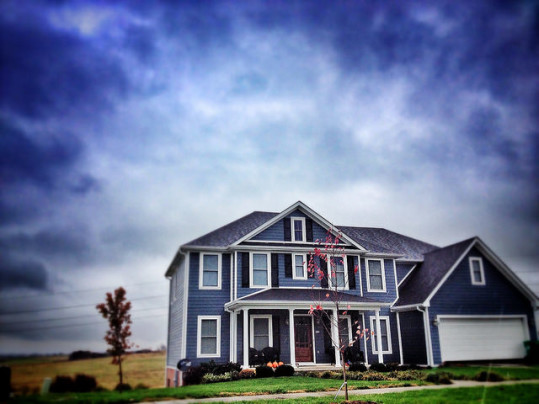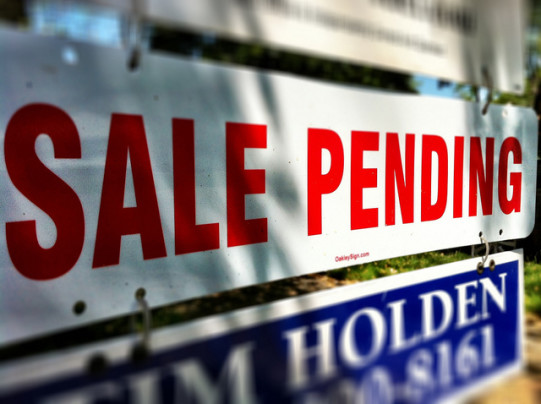Fannie Mae’s National Housing Survey is a monthly measure of how Americans feel about the housing market, buying or renting a home, mortgages, house prices, the economy, and their personal financial situation. In April, the survey found more Americans saying they’d like to buy a home the next time they move but fewer who think now is a good time to buy. The results likely reflect rising concern over increasing home prices and weakened economic conditions. Doug Duncan, Fannie Mae’s chief economist, said the spring and summer home buying season has gotten off to a stronger start and consumers’ sentiment toward the housing market has improved. “The share of consumers who intend to own rather than rent their next home rebounded after a two-month slide,” Duncan said. “Meanwhile, home price growth expectations strengthened to the strongest pace since last October. Nevertheless, consumers continue to express concerns about the recent weakening economic conditions and high home prices. These combine to depress the share of consumers believing it is a good time to buy a home.” According to Duncan, this supports the group’s view that residential real estate will see gains this year but they will be modest. More here.
Archive for May 2015
Mortgage Data Shows Purchase Activity Rising
According to the Mortgage Bankers Association’s Weekly Applications Survey, the number of Americans requesting applications for loans to buy homes rose 1 percent from a week earlier and is now at its highest level in nearly two years. The news was a bright spot in a report that also included data showing an increase in average mortgage rates and a sharp drop in refinance demand. In fact, the average contract interest rate for 30-year fixed-rate mortgages with both conforming and jumbo balances was up from a week earlier, joining FHA loans and 15-year fixed-rate loans in a week when rates were up across all loan categories. Likely because of rising rates, the Refinance Index fell 8 percent from the previous week. Mike Fratantoni, MBA’s chief economist, said interest rates were up across the globe due to signs of recovery in Europe. Fratantoni also noted that the average loan amount reached a record high last week, indicating that “the mix of purchase activity is still skewed toward higher priced homes.” Still, because purchase application demand is a good indicator of future home sales, the increase shows the spring buying season is off to a good start. The MBA’s weekly survey has been conducted since 1990 and covers 75 percent of all retail residential mortgage applications. More here.
How Home Size Has Changed Through The Years
A new analysis of data collected by RealtyTrac shows the size of the average American home increased 43 percent between 1900 and 2015. In fact, the data shows the footprint of the median U.S. home grew from 1,612 square feet to 2,312 square feet over the past 115 years. By comparison, the average American man only grew four inches to 5’10” during the same period. The data – which looked at the size of millions of homes in each decade – shows home size accelerated after around 1980. Average square footage hovered around 1,500 square feet for much of the first half of the 20th century, actually falling to 1,340 square feet between 1940 and 1949. However, after 1980 home sizes began to grow larger and larger. For example, the average home was 1,831 square feet between 1980 and 1989, just over 200 square feet larger than it was 80 years earlier. But, in the 35 years since, average square footage jumped nearly 500 square feet, growing by almost 200 square feet per decade. More here.
Survey Says 1st Timers Are Ready To Buy
The recently released Campbell/Inside Mortgage Finance HousingPulse Tracking Survey – which measures home buyer traffic – found there are more buyers looking to purchase a home this spring than last and many of them are first-timers. Typically, first-time home buyers represent about 40 percent of all home sales. However, in recent years, the number of young Americans purchasing homes has fallen, largely due to an underperforming job market and the lasting effects of the most recent recession. This year, many analysts have predicted an uptick in sales and, particularly, an increased number of sales among first-time buyers. The survey, which looks at data through the end of February, shows they may be right. In fact, the results found a nearly 4 percent increase in the number of sales among first-time buyers from last year’s level. Tom Popik, research director for Campbell Surveys, said the expectation that mortgage rates will rise over the next year could be helping motivate potential home buyers to purchase in the coming months. He also believes recent changes in mortgage financing, aimed at getting more participation from first-time buyers, may be helping. More here.
Real Estate Market Poised For Continued Gains
A group of economists gathered by the National Association of Home Builders recently offered their housing market outlook for the rest of this year and beyond. And, according to their assessment, the real estate market is becoming more stable and the gains will continue through the end of this year and into the next. “This should be a good year for housing, buoyed by sustained job growth, rising consumer confidence that is back to pre-recession levels and a gradual uptick in household formations,” David Crowe, NAHB’s chief economist, said. “We expect 2016 to be even better due to a significant amount of pent-up demand and an economy that will be entering a period of reasonable strength and consistency.” Crowe estimates that there were 7.4 million lost home sales over the past few years when the housing market was in recovery and many Americans felt uncertain about their jobs and financial situation. A lot of those potential home buyers, who put off their dream of homeownership, should now be ready to buy. Because of this, analysts believe there will be a significant pick up in home sales and household formation this year and into 2016. More here.
Pending Home Sales Rise For 3rd Straight Month
The National Association of Realtors’ Pending Home Sales Index measures the number of contract to buy homes that were signed each month. Because it tracks contract signings rather than closings, the index is a good indicator of future home sales. According to the most recent release, the index rose for the third consecutive month in March and is now at its highest level since June 2013. Lawrence Yun, NAR’s chief economist, said the 1.1 percent improvement over last month was due to the fact that more home buyers than usual have entered the market so far this spring. “Demand appears to be stronger in several parts of the country, especially in metro areas that have seen solid job gains and firmer economic growth over the past year,” Yun said. “While contract activity being up convincingly compared to a year ago is certainly good news, the increased number of traditional buyers who appear to be replacing investors paying in cash is even better news.” In the early days of the housing recovery, real estate investors drove the market. Now that home prices have largely recovered, the housing market is being driven by more traditional buyers, which is a good indication that there is more stability in the overall market than in recent years. Regionally, pending sales were down in the Northeast and Midwest, while both the South and West saw increases. The index is now 11.1 percent above last year’s level. More here.






